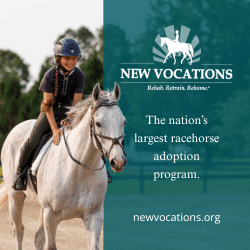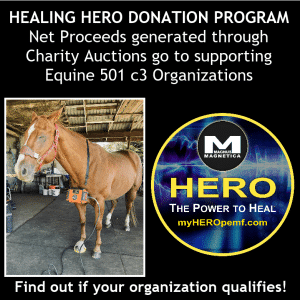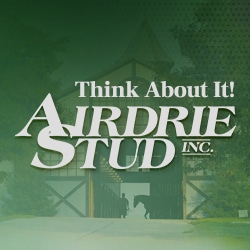The demand for and value of quality off-track Thoroughbreds has increased
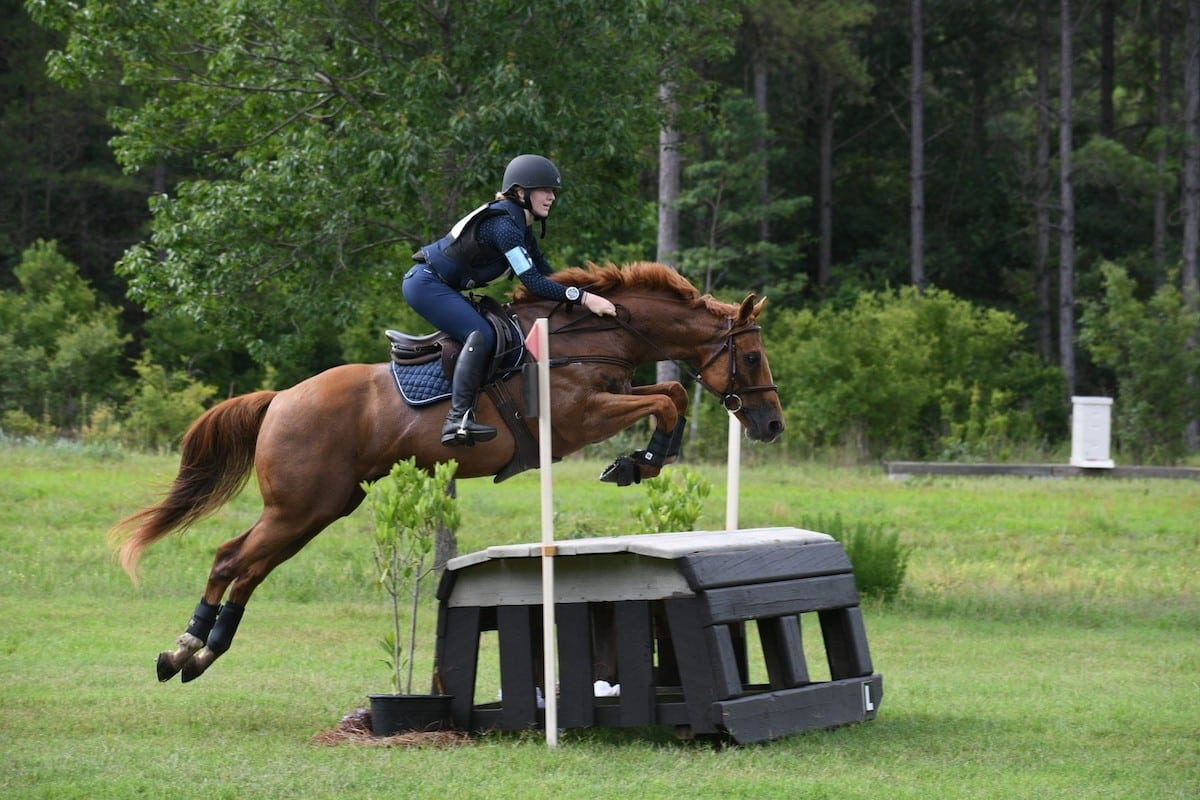
Sydney Burlage bought Kiosk’s Cause in 2016 from Brit Vegas, whose sales program focuses on OTTBs that have just retired from racing. GRC photo courtesy Brit Vegas
Twenty years ago, 14-year-old Tracy Gold found her heart horse — a spunky gray Thoroughbred named Lord Julian — at a horse rescue in Airville, Pennsylvania. Her parents paid the $800 adoption fee, and the pair went on to tackle hunter courses, Pony Club rallies, college equestrian club and more. As “LJ” now transitions to leadline mount for her daughter, Gold has begun the search for her next off-track Thoroughbred. Her realization? That “rescuing” big, sound, athletic ex-racehorses for cheap is a thing of the past.
For nearly four months the Baltimore-based editor and children’s book author has been horse-shopping for the perfect equine partner. Her “wants” list is similar to that of many other buyers: tall, sound, safe, brave gelding suitable for hunter paces and paper chases. With a budget of up to $15,000, Gold assumed finding an OTTB that fit her needs would be easy, but she’s watched as 20-plus horses she’s inquired about on the East Coast have sold sight-unseen — often over asking price — or had deposits on them by the time she arrived for a trial ride. Others simply haven’t been good matches or were unsound.
“I saw one listed for $10,000 that hadn’t even been ridden (after letdown from racing) — they’d just done free jumps — and within a couple of days he was sold based off video,” she recalls.
Benchmark Sport Horses, based in Camden, Delaware, is one of the rehoming outfits Gold checks regularly for new listings. Founder and trainer Jessica Redman has seen a similar trend develop in the immediate post-track market. She says when she started her business in 2007, she was selling 10 to 15 recently retired racehorses a year. In 2021 she predicts she’ll sell around 200. “The market has taken off. It’s insane,” Redman says, noting that the spike has coincided with the launch of the Retired Racehorse Project’s Thoroughbred Makeover, as well as breed-specific classes and programs such as The Jockey Club’s Thoroughbred Incentive Program.
Nebraska-based eventer, reseller and perennial Makeover competitor Brit Vegas agrees: “The (inaugural) 2015 Makeover got people really excited. 2015 spiked the interest big time, but price didn’t necessarily follow until a few years later.” She says the value of a horse coming off the track has risen steadily since.
Five years ago Vegas was selling OTTBs for, on average, $5,000. Last year they fell between $5,000 and $8,000, with the latter being a horse she felt confident had upper-level potential.
“Now, I’m selling top prospects for $12,000 right off the track,” she says. Vegas buys her horses from trusted racing connections who contact her when their charges are ready to transition to new careers. About 70 to 90 horses come through her program per year — a far cry from the handful a year she was selling a decade ago.
“Most everything that gets sold out of my barn is fresh off the track,” she says. “It’s been ridden, evaluated, has a solid restart going and is pointed in the direction of what the horse is most likely to excel at.”
Redman has a similar business model: She buys her horses directly from the track, then assesses, markets and resells them. She might not even put a ride on a horse, however, before it sells — typically within the $4,500 to $6,500 range.
“A lot of times the hard part is finding the horses,” she admits. “It’s become harder for me to find what I want than to sell it.”
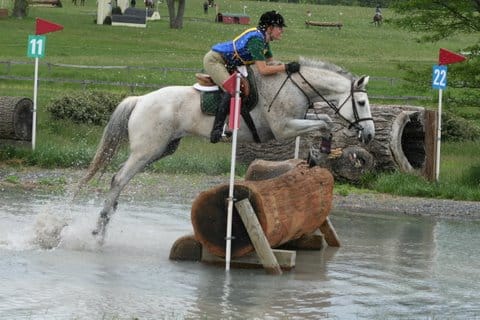
Holly Gilmore courtesy Tracy Gold
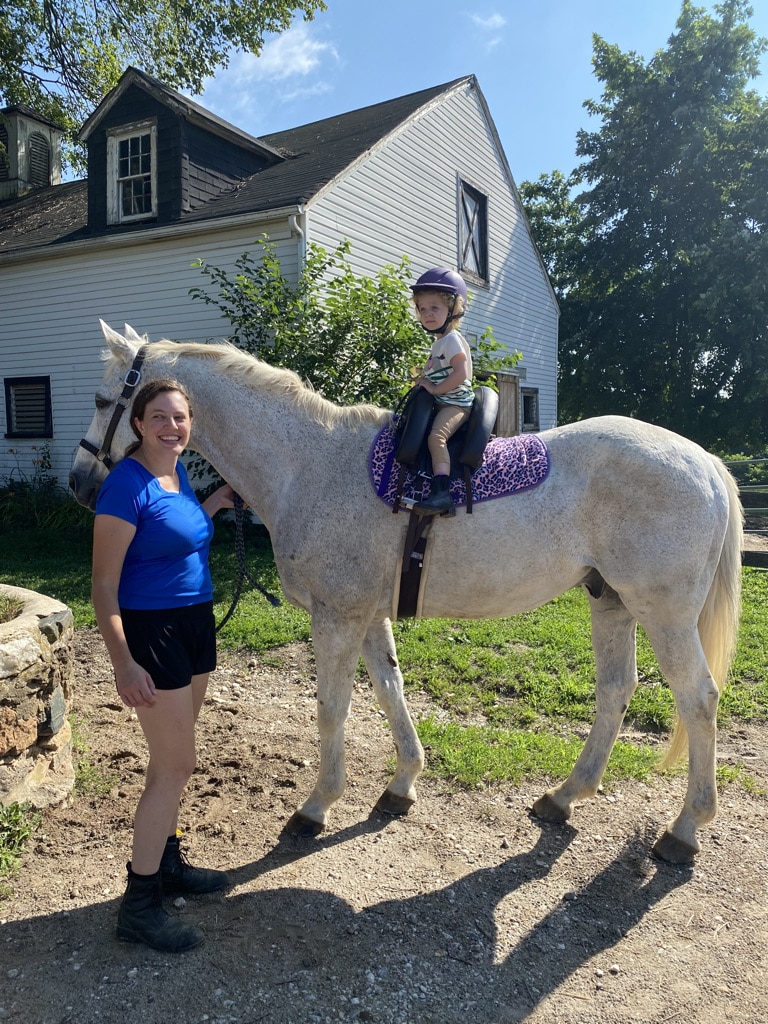
Tracy Gold’s first Thoroughbred, LJ, has transitioned from Pony Club all-arounder to leadline extraordinaire. As Gold shops for her next OTTB, she’s realizing how the market has evolved. Robert Wray courtesy Tracy Gold
Act Fast
As Gold can attest, if an OTTB catches your eye in a Facebook group or on the OTTB United app, you’d better be prepared to act. Buyers have become accustomed to acquiring horses sight-unseen, so when a big, beautiful, sound horse hits the market, a frenzy often ensues.
“When I decide my horses are ready, I know what they want to do and I post that they’re ready, they sell almost immediately,” says Vegas, who estimates she sells 90% of her horses sight-unseen.
Both she and Redman acknowledge this buying style is not a new phenomenon. They (and many other trainers) have worked hard over the years to build reputations as trusted sellers. They’re brutally honest about their horses’ quirks, soundness and potential, so buyers feel comfortable paying for a horse they haven’t tried.
“I’m very black-and-white with sales,” Vegas notes. “What I tell you you’re getting is exactly what you’re getting.”
The pandemic, however, has only amplified buying off video. Travel restrictions have prevented people from trying horses, and many rehoming organizations shut their doors to in-person visits in 2020.
“I don’t pressure people to buy sight-unseen,” Redman says, “but it’s just really hard when people want to set up an appointment to try a horse, and I have to tell them, ‘Sorry, that horse was sold.’ ”
Gold is one of those people: “I had it in my head that I could look and comparison shop for a week or two. But I’ve learned that at a place like (Benchmark Sport Horses) that has such a good following, you need to be able to drop everything to go up there and see a horse the next day or the same day if you want to meet it before deciding. It’s hard to do on a moment’s notice, especially when you have a job and a kid.”
Redman says the market is equally hot for resellers trying to acquire big, sound, athletic horses from track backsides. These horses get snatched up instantly and for higher prices than in years past. What Redman now must pay out of pocket — $2,500 to $3,500 — for a horse that will pass a prepurchase exam has a trickle-down effect on what she lists it for when it’s ready to resell.
New Norms
The internet, social media and mobile apps have expanded buyers’ search pools for horses not just in their regions but anywhere in North America. These technologies have also placed sellers’ listings in front of many more eyes. So while Vegas, for instance, considers herself ideally located in the middle of the country for horse shoppers wanting to try horses, she primarily sells off video and internet listings. Redman, based in the Mid-Atlantic region, says she sells proportionately to buyers all over the country.
The Thoroughbred Makeover has affected the time of year when demand is highest. Sellers now see a flurry of activity in winter, right after Makeover trainers receive their acceptance letters.
“January used to be my quiet month,” says Vegas. “And now, January and February are insane, which is kind of tough because that’s not a high-volume time for horses to come off the track. The Retired Racehorse Project is 100% responsible for the excitement come January, February, March, and I think that’s amazing.”
Slap “RRP Eligible” on a horse’s listing any time of year, and demand increases. “Increasing demand for Thoroughbreds” is, after all, an integral part of the RRP’s mission.
“After six years of what the RRP has been doing, people are reenergized about the Thoroughbred in general,” Vegas says. “Yes, the horse market has increased across the board, but I think what is happening with the Thoroughbred right now would be happening regardless of whether the horse market spiked.”
So can you still find a recently retired racehorse for cheap or free? Our sources agree that the nearly free horse still exists, but it’s hard to find, depends on who you know and might come with limitations.
Gold initially took a well-intentioned “adopt don’t shop” approach to her horse search by contacting local all-breed equine rescues. She discovered they had few, if any, suitable OTTBs available. Through word-of-mouth, she’s also had trainers offer her free horses that need some rehab or an extended letdown before they can start their next careers.
Gold acknowledges that a horse’s initial purchase price is just a drop in the bucket when you’re signing on to pay for a lifetime of care. For this reason, she says she can justify being patient and waiting for the right horse when it comes along. Even as she’s watched Thoroughbred after Thoroughbred hit — and immediately fly off — the market, “it’s comforting because there are always more really nice horses coming in.”
This article was originally published in the Fall 2021 issue of Off-Track Thoroughbred Magazine, the only publication dedicated to the Thoroughbred ex-racehorse in second careers. Want four information-packed issues a year delivered to your door or your favorite digital device? Subscribe now!


